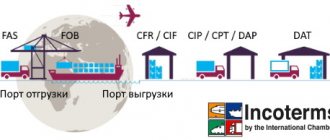Aviation technology
(AT) are primarily aircraft designed to fly in the Earth’s atmosphere (aircraft), their engines, on-board equipment and assemblies[1].
By purpose, AT includes military and civilian, as well as dual-use AT. In military aviation, flight support equipment also includes flight support equipment (ground support and airfield technical support equipment, operational control equipment and tools, ground-based air traffic control, landing and communications equipment). The concept of AT may include simulators[2].
Military aviation equipment
Military AT is a type of AT intended for use in the Armed Forces in solving training and military tasks. This includes:
- combat aircraft (bomber, fighter-bomber, fighter, attack aircraft, anti-submarine)
- Operations support aircraft (reconnaissance aircraft, radar patrol and guidance aircraft, jammer, spotter, repeater, aerial tanker, military transport)
- helicopters (reconnaissance, radar patrol and guidance, target designation, jammer, mine spreader, transport)
- RPV
- gliders and motor gliders
- drifting and tethered balloons, other aerostatic and hybrid aircraft
Examples of flight support equipment are:
- automated air traffic control systems
- fighter guidance systems for air targets
- long-range and short-range navigation systems
- radar airspace control systems
- landing systems
- equipment for ground handling and operational control of aircraft, tools
List of dual-use goods
There is no single list of dual-use goods.
At the moment, Russia has 6 export control checklists, also approved by the relevant presidential decrees, each of which describes in detail its own list of dual-use products:
- List of dual-use goods and technologies that can be used in the creation of weapons and military equipment and are subject to export control (dated December 17, 2011)
- List of microorganisms, toxins, equipment and technologies subject to export control (dated August 20, 2007)
- List of dual-use equipment and materials and related technologies used for nuclear purposes that are subject to export controls (dated January 14, 2003)
- List of chemicals, equipment and technologies that can be used to create chemical weapons and which are subject to export controls (dated August 28, 2001)
- List of equipment, materials and technologies that can be used in the creation of missile weapons, and in respect of which export controls have been established (dated August 8, 2001)
- List of nuclear materials, equipment, special non-nuclear materials and related technologies subject to export controls (dated February 14, 1996).
Notes
- Federal Law of January 8, 1998 N 10-FZ “On state regulation of aviation development.” Article 1. Basic concepts (undefined)
. GUARANTEE. Access date: January 9, 2021. - Aviation equipment // A - Bureau of Military Commissars / [under the general. ed. A. A. Grechko]. - M.: Military publishing house of the Ministry of Defense of the USSR, 1976. - P. 31. - (Soviet Military Encyclopedia: [in 8 volumes]; 1976-1980, vol. 1).
- Aviation rules, part 21. Certification of aviation equipment, development organizations and manufacturers. - Moscow: Aviaizdat, 2013. - 49 p.
Normative base
All information is collected in the relevant Federal Law, which entered into force on July 29, 1999. It defines both export control itself and the products subject to it.
An interesting feature is that the very concept of “dual-use products,” although it appears in the text of 183-FZ, is not enshrined in law in any way. Officially, these are “controlled goods and technologies,” but from their definition it is clear what kind of dual use we are talking about:
controlled goods and technologies
- raw materials, materials, equipment, scientific and technical information, works, services, results of intellectual activity (rights to them), which, due to their characteristics and properties, can make a significant contribution to the creation of weapons of mass destruction, their delivery vehicles, other types of weapons and military equipment, as well as products that are especially dangerous in terms of preparing and (or) committing terrorist acts;
export controls
- a set of measures to ensure the implementation of the procedure established by this Federal Law, other federal laws and other regulatory legal acts of the Russian Federation for carrying out foreign economic activity in relation to goods, information, work, services, results of intellectual activity (rights to them), which can be used in the creation weapons of mass destruction, means of their delivery, other types of weapons and military equipment, or in the preparation and (or) commission of terrorist acts;
Export control is carried out by the Federal Service for Technical and Export Control (FSTEC of Russia). The regulations on it were approved on August 16, 2004.
Literature
- Soviet aviation technology / ed. A. A. Kobzarev, comp. N. M. Semyonova. - M.: Mechanical Engineering, 1970. - 175 p.
- A - Bureau of Military Commissars / [under general. ed. A. A. Grechko]. - M.: Military publishing house of the Ministry of Defense of the USSR, 1976. - 637 p. - (Soviet Military Encyclopedia: [in 8 volumes]; 1976-1980, vol. 1).
- Military aviation technology // War and peace in terms and definitions / ed. Rogozina D. O. - M.: Publishing House "PoRog", 2004. - 624 p. — 3000 copies. — ISBN 5-902377-04-8. Archived copy from January 5, 2012 on the Wayback Machine
To improve this article it is desirable:
After fixing the problem, remove it from the list. Delete the template if all defects have been resolved. |
Dual-use goods and technologies
| Entire electronic library >>> | FOREIGN ECONOMIC RELATIONS >> |
| Tutorials |
| FOREIGN ECONOMIC RELATIONS Section: Economics |
Dual-use goods and technologies are equipment, materials, raw materials, technologies and scientific and technical information that are used for civilian purposes, but can be used for the production of weapons and military equipment, including weapons of mass destruction (chemical, bacteriological, nuclear) and missile delivery vehicles.
The export of dual-use goods and technologies is under the control of the Russian Federal Service for Currency and Export Control. Control is carried out in accordance with the Regulations on the procedure for controlling the export from the Russian Federation of dual-use goods and technologies, the export of which is controlled,*
approved by Decree of the Government of the Russian Federation No. 1172 of 07.10.96.
* Economy and life. - 1996. - No. 45.
The procedure for controlling the export of dual-use goods and technologies declared for use for non-military purposes provides for:
approval of draft international treaties of the Russian Federation providing for the transfer of dual-use goods and technologies;
preparation and issuance of a conclusion on the possibility of exporting dual-use goods and technologies;
licensing the export of dual-use goods and technologies;
customs control and customs clearance of dual-use goods and technologies moved outside the Russian Federation, unless otherwise established by legislative acts of the Russian Federation, decisions of the President of the Russian Federation and the Government of the Russian Federation.
Draft international treaties of the Russian Federation (regardless of their form and name) providing for the transfer to foreign countries of dual-use goods and technologies declared for use for non-military purposes are subject to mandatory approval by the Russian Federal Service for Currency and Export Control (VEK), the Ministry of Foreign Economic Relations of Russia , Russian Foreign Ministry.
The contract (agreement, agreement) for the export of dual-use goods or technology from the Russian Federation must indicate:
purpose and place of use of the export item;
end user;
An undertaking by the importer that the exported item will be used solely for the stated purpose and will not be re-exported or transferred to anyone without the written consent of the exporter. In case the importer is an intermediary, similar written obligations must also be accepted by the end user.
In some cases, export transactions with dual-use goods and technologies must be carried out on the terms provided to the Russian exporter by its foreign counterparty;
the right to verify the end user's use of the exported item in accordance with the stated purposes;
a delivery confirmation certificate or other document issued by the customs authority of the country of final use and confirming the importation of the export item into its territory.
The need to fulfill these conditions is determined by the EEC based on the results of an interdepartmental study of the circumstances of a specific export transaction, as well as on the basis of an assessment of the risks associated with this transaction.
Export of dual-use goods and technologies is carried out under one-time licenses issued by the Ministry of Foreign Economic Relations of Russia. The basis for issuing a license is the conclusion of the EEC on the possibility of exporting dual-use goods and technologies.
To obtain the EEC conclusion, the exporter sends the following documents to her address:
• application for issuance of an opinion;
• a notarized copy of the certificate of your state registration;
• a copy of the contract (contract, agreement) for the export of dual-use goods or technology. A copy of the contract (agreement, agreement) must be certified by the signature of the head or authorized official and the seal of the exporter’s organization. The copy of the contract (agreement, agreement) must also indicate the date of its issue and make a note about the location of the original;
• an extract from the trade register or other document confirming the registration of the importer (end user) in accordance with the legislation of the country of its location;
• documents containing the obligations of the importer (end user) - in the absence of these obligations in the text of the contract;
• import certificate or its equivalent.
An application for the issuance of an opinion on the possibility of exporting dual-use goods or technology created at the expense of the federal budget is subject to mandatory approval by the ministry (department) of the Russian Federation performing the functions of the state customer.
Documents in a foreign language are submitted by the exporter accompanied by their certified translations into Russian.
The EEC sends its conclusion to the Ministry of Foreign Economic Relations of Russia and to the exporter, who, within 6 months from the date of signing the said conclusion, must submit it to the Ministry of Foreign Economic Relations of Russia to issue a license.
A necessary condition for customs clearance of foreign goods imported into the territory of the Russian Federation for the purpose of processing is the presence of a license issued by the Ministry of Foreign Economic Relations of Russia for the export of processed products.
Export from the Russian Federation of dual-use goods and technologies for temporary use on the territory of foreign states without transferring them to any foreign person with subsequent return to the territory of the Russian Federation is carried out without a license on the basis of the conclusion of the State Economic Commission on the possibility of such export in the manner determined by the legislation of the Russian Federation.
To obtain the appropriate conclusion, the participant in foreign trade activities carrying out the specified export (i.e., the applicant) sends it to the Federal Service of Russia for Currency and Export Control;
application for the issuance of an opinion;
a notarized copy of the certificate of state registration;
obligation to re-import dual-use goods or technology or their processing product(s) within a specified time frame in accordance with the legislation of the Russian Federation.
To the contents of the book: FOREIGN ECONOMIC RELATIONS
See also:
Foreign economic relations. United...
| Foreign economic relations. The United States is the world's largest exporter (13% of world exports) and importer (18% of world exports... bibliotekar.ru/rGeo/41.htm |
Foreign economic relations. Forms of foreign economic relations
| We most often see foreign economic relations in the form of import and export of goods, import and export. Co. in the modern economy is among... bibliotekar.ru/biznes-35/47.htm |
Foreign economic relations are international...
| Foreign economic relations are international economic, trade and political relations involving the exchange of goods, ... bibliotekar.ru/audit-2/53.htm |
Foreign economic relations of Russia with countries that are...
| Russia’s foreign economic relations with countries that were former republics of the USSR have a number of features, |
State regulation of foreign economic...
| Foreign economic relations require regulation by the state. In a centralized economy, foreign economic bibliotekar.ru/biznes-35/49.htm |
The role of international credit in the development of production. In the middle...
| Thirdly, the loan ensures the uninterrupted operation of international settlement and foreign exchange transactions servicing foreign economic relations... |
General Agreement on Tariffs and Trade GATT...
| Foreign economic relations are represented not only by trade in goods, but also by the movement from country to country of intellectual products, spiritual... bibliotekar.ru/biznes-35/50.htm |
An important principle of foreign trade activity is...
| ... prices that do not correspond to production costs, due to large ... foreign economic relations and regulate them for ... www.bibliotekar.ru/mezhdunarodnye.../51.htm |
Types of prices and their classification. Composition and price structure. Wholesale...
| 1) reflect the foreign economic relations of the state with other countries;. 2) depend on the prices of world markets, reflecting the conditions... bibliotekar.ru/cena-cenoobrazovanie-2/6.htm |
Taxes and tax system of Russia Business law









